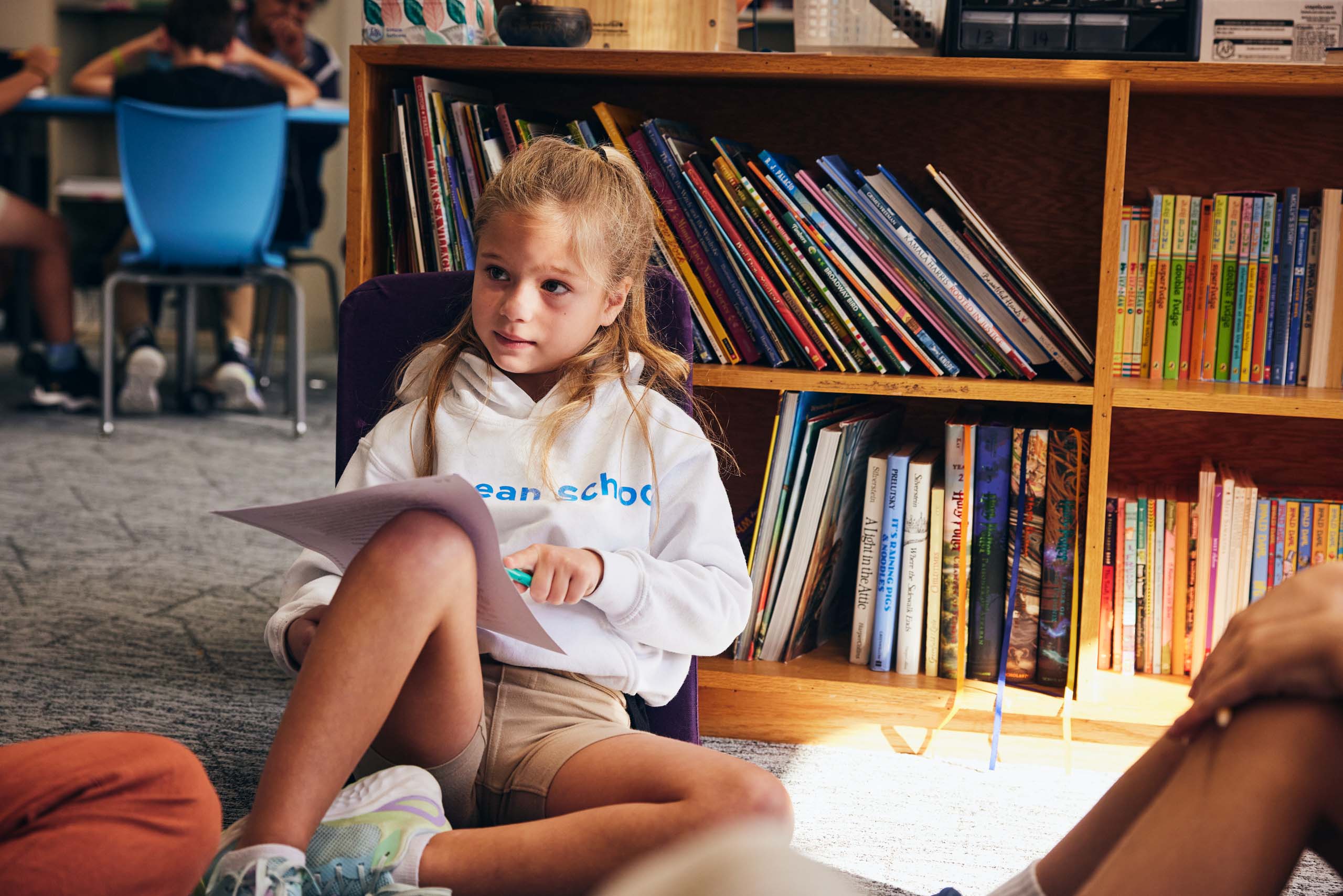Jennifer King, K-4 Speech and Language Pathologist
Individual Reading and Writing Class Periods: The building blocks for literacy success
One of the hallmarks of McLean School’s Lower School is how we approach literacy education. Unlike many traditional programs that combine reading and writing into one comprehensive English Language Arts (ELA) block, we have intentionally chosen to separate these essential skills into distinct periods. This purposeful decision reflects our belief in the importance of providing dedicated time and focus for both reading and writing, allowing students to fully immerse themselves in each discipline without feeling rushed or overwhelmed. And for students who may struggle with reading and/or writing because of dyslexia, dysgraphia, or organizational challenges, this approach is highly effective.
As a speech-language pathologist, my work centers around identifying and remediating language-based learning challenges. Reading comprehension falls under the umbrella of receptive language as an individual takes in and processes a written code either visually or auditorily. Written language, on the other hand, is an expressive language skill – just as intricate, but utilizes different pathways to formulate, organize, and output a message depending on your purpose and audience. Reading and writing are deeply interconnected, but they require different skill sets and cognitive processes. By separating them, we allow our students to dive deeply into the unique demands of each.

During our small group reading period, students focus on developing their decoding, fluency, and comprehension skills. They analyze texts, learn to identify themes, make inferences, and expand their vocabularies. This period is designed to foster a love of reading while equipping students with the strategies they need to become confident, independent readers.
In our small group writing period, students shift their focus to expression. They learn to organize their thoughts, develop strong sentences, and expand their ideas into cohesive paragraphs and essays. This period also emphasizes grammar, syntax, and the conventions of writing, empowering students to communicate effectively and creatively. The designated writing time provides ample opportunities for practice, revision, and feedback, all of which are essential for growth.
The benefits of this approach are profound. By dedicating separate times to reading and writing, we ensure that neither discipline is overshadowed by the other. Students are given the time and space to engage with each process fully, deepening their understanding and mastery over time. Furthermore, this structure allows our teachers to tailor instruction to meet the specific needs of their students, whether they are reinforcing foundational skills or introducing more advanced concepts.
Another key advantage of this separation is the way it supports differentiated instruction. During reading time, students might work in small groups based on their reading levels or target specific comprehension strategies. In writing, they can focus on personalized goals, such as improving sentence structure or experimenting with descriptive language. This flexibility ensures that every student receives the support and challenge they need to thrive.
This is not to say that no reading is done in writing class or that no writing is done in reading groups. The nature of the tools and strategies we implement allow for cross-curricular learning and application. Repetitive practice is given in each of these core classes to allow students to generalize skills across academic content.
Perhaps most importantly, our approach fosters a balanced appreciation for both reading and writing. By treating them as distinct, yet complementary disciplines, we help students see the value and joy in both. They come to understand that reading opens up new worlds of knowledge and imagination, while writing gives them the tools to share their voices with the world.
In a time when the demands on students and educators are greater than ever, we believe that this focused approach to literacy is not just effective, but essential. By giving reading and writing the dedicated time and attention they deserve, we are setting our students up for success not only in school but in life. At our Lower School, we are proud to be cultivating confident readers, skilled writers, and lifelong learners—one class period at a time.
McLean School, located in Potomac, Maryland outside of Washington, DC, serves bright K-12 students, including those with dyslexia, ADHD, academic anxiety, and organizational challenges. Learn more today.